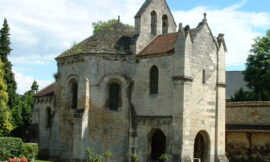Gorakhpur, a city in the northeastern part of the Indian state of Uttar Pradesh, holds a significant place in the cultural, historical, and economic landscape of the region. Nestled along the banks of the Rapti River, Gorakhpur has evolved from its historical roots to become a dynamic urban center with a blend of tradition and modernity.
One of the city’s most notable aspects is its historical and cultural association with the Nath tradition, a Shaivite sect of yogis led by the legendary yogi Gorakhnath. The Gorakhnath Math, a prominent temple and spiritual center, is dedicated to Guru Gorakhnath and attracts devotees from various parts of India. The temple complex is not only a place of worship but also a hub for spiritual and cultural activities, hosting festivals, rituals, and events that celebrate the Nath tradition.
Gorakhpur’s historical significance extends to its role as a prominent center during the era of the Kushan Empire. The city’s past is intertwined with tales of ancient kingdoms, and archaeological sites like the Tarkulaha Devi Temple and the Gita Press stand as reminders of Gorakhpur’s rich heritage. The Gita Press, founded in 1923, is renowned for its publication of Hindu religious texts, including the Bhagavad Gita, and has played a pivotal role in disseminating spiritual literature.
The city’s demographic diversity adds to its cultural vibrancy. Gorakhpur is a melting pot of various communities, and this diversity is reflected in its festivals, traditions, and culinary offerings. The local cuisine, influenced by both North Indian and Awadhi culinary traditions, offers a delectable array of dishes that cater to a wide range of tastes.
Gorakhpur is also known for its educational institutions, including Deen Dayal Upadhyay Gorakhpur University. The university, established in 1957, has contributed significantly to the academic and intellectual growth of the region. The presence of several schools and colleges further reinforces Gorakhpur’s status as an educational hub.
Economically, Gorakhpur serves as a vital center for trade and commerce in eastern Uttar Pradesh. Its strategic location, connecting various regions and serving as a gateway to Nepal, enhances its importance as a commercial hub. The city’s markets, such as Golghar and Rustampur Bazaar, bustle with activity, offering a diverse range of products and commodities.
The transportation infrastructure in Gorakhpur plays a crucial role in facilitating connectivity. The Gorakhpur Junction, one of the busiest railway stations in the region, connects the city to various parts of India. The city’s airport, Mahayogi Gorakhnath Airport, further enhances its accessibility, catering to both domestic and international flights.
In recent years, Gorakhpur has witnessed developmental initiatives aimed at enhancing infrastructure, healthcare, and overall quality of life. The city has seen improvements in roads, public spaces, and healthcare facilities, contributing to its overall growth and modernization.
Gorakhpur’s cultural calendar is adorned with festivals and events that showcase the city’s traditions and communal harmony. The vibrant celebrations of festivals like Holi, Diwali, and Eid resonate throughout the city, bringing together people from diverse backgrounds in a spirit of unity and festivity.
Despite its modernization, Gorakhpur retains an old-world charm, with its historical sites, temples, and bustling markets offering a glimpse into the city’s rich past. The confluence of tradition and progress in Gorakhpur paints a dynamic picture of a city that honors its roots while embracing the opportunities of the future. As it continues to evolve, Gorakhpur stands as a testament to the resilience and adaptability of cities that bridge the gap between history and contemporary life in the vast tapestry of India.



